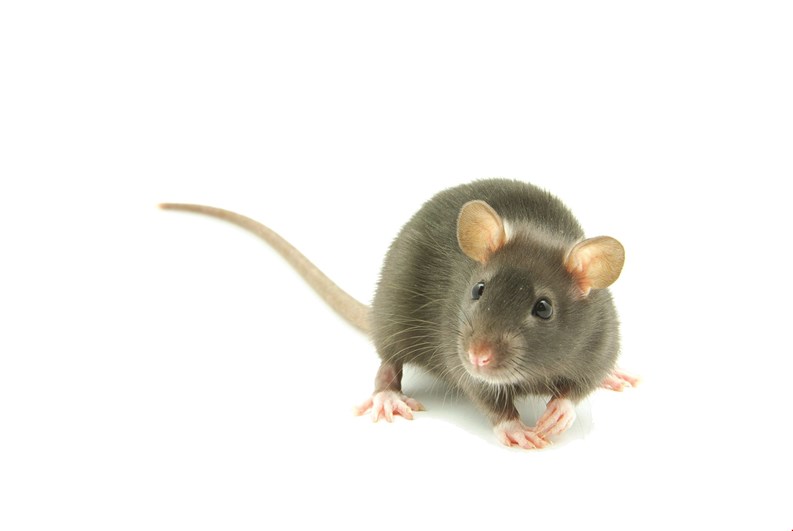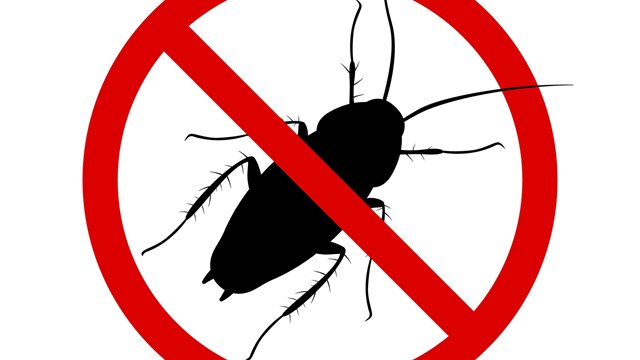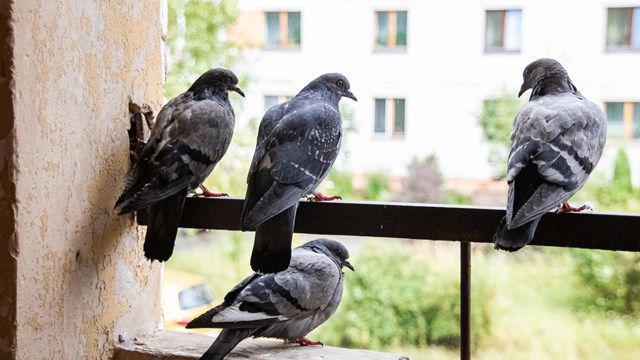Pests are a part of life. Wherever people go, vermin of one kind or another are sure to follow. This is particularly true in urban environments like Newark and Jersey City, where rodent sightings come with the territory, but smaller cities and towns are by no means immune, nor are rural areas. Unfortunately, pests are not merely gross. Many of them pose threats to humans, pets and property, so controlling or eliminating them is a major concern for all boards and managers.
Bedbugs
The greatest insect threat right now is a relatively new arrival, or rather, a return visitor: the bedbug. Whether because of global warming, pesticide-control laws, insect immunities, or just bad luck, this old pest has experienced a renaissance in the last decade or so. George J. Caso, president of Amco Pest Services, Inc. in Wall Township, says, “They eliminated the bedbugs because of the DDT they used years ago. They used a lot stronger materials.” Now, he adds, that we don't allow DDT, of course, the bedbugs have returned. “The first infestation started back in 2003. Right now, bedbugs are like a number one bug. They're on our priority list,” says Caso.
Sabrina Weinstein, director of communications at Global Pest Control in Airmont, New York, agrees. “The bedbug situation doesn’t slow down. We’re dealing with it all over, from the most prestigious apartment buildings to the opposite. It’s everywhere.”
One reason bedbugs are among New Jersey's most pressing pest problems now is because they're so hard to put up with. They leave itchy little bite marks on all their favorite people. And while rodents are bad, bedbugs can feel like a Biblical plague. They pose an enormous challenge for pest-control companies because they are so hard to get rid of completely. “There are a lot of misconceptions about how to handle a bedbug situation,” Weinstein says. “People are told to clean out their apartments, and they diligently go through their belongings. They generously give clothing away to Goodwill shops or put their furniture outside without telling anyone that it has bedbugs.” Thus the bugs spread happily from one building or property to another.
“There are also situations where building managers or pest-control employees are aware of a tenant with an infestation, but they just can’t get into the apartment to treat it,” she says. “Then you have a higher probability that surrounding units will also be infested. If they’re in one apartment, they’ll just organically grow and multiply and continue on to the next place.” In the past decade, they have proved very, very good at doing just that.
“You could also have a situation where they did the extermination and the heat treatment and did everything right, and there’s still a problem, and then they discover that one apartment has a clutterer, and that’s the cause of it all,” Weinstein says.
Bedbugs hide very effectively in clutter. Though they like untidyness because it gives them hiding places, it's not filth or poor hygiene that attracts them. “It's nothing to do with cleanliness,” says Caso. “They're attracted to the carbon dioxide given off by a person.”
Another factor that makes bedbugs difficult to eradicate is the necessity of repeat inspections. After a meal, bedbugs can hide for long periods in walls or clutter. “They could last up to a year in a dormant stage,” Caso explains.
In addition, some pesticides work on bedbugs about as well as guns worked on Godzilla. “Many pesticides do not work on bedbugs because they can mutate,” says Jennifer Erdogan, director of the bedbug division at Bell Environmental Services in Fairfield, New Jersey. “They’re genetically capable of evolving to be immune to the pesticide. If parents were sprayed with a certain pesticide, their offspring, in most cases are very immune.”
In any case, the idea of spraying a building willy-nilly in hopes of killing a pest is outmoded. “I think that there’s been a reduction in arbitrary spraying, industry-wide,” she says. “Our company has been doing that”—that is, spraying less—“since the early ‘80s. Basically, you have to find the source of an infestation and target it that way.”
These little creatures can wreak havoc on a building—even an exclusive one. If not properly and thoroughly treated, they can certainly impact sales prices. The new and improved (from the pests’ perspective) bedbug has necessitated new techniques in pest control. The best approach is multifaceted. In addition to using pesticides, other methods to attack the pests are vacuuming to physically remove live bugs, heating the room (122 degrees kills them), and the more targeted techniques of freezing the critters with cryonite or steaming them with 212-degree vapor from a nozzle.
Another newer tactic is to sic the dogs on them. “The biggest pest that shook up the industry in the past few years has been bedbugs,” Erdogan says. “Certain strategies for determining infestations, like using dogs, is really unique and something that we haven’t seen too much of yet.” Use is growing, though, especially to track down how widespread an infestation may be within a building. A dog's nose is faster at finding the pests than human eyes doing a visual inspection.
This is not to say the bedbug problem has been solved—we’re not there yet. But the reason we don’t hear it on the news as frequently as we did is because pest-control specialists have devised these new ways to contain and eliminate the creatures.
Rodents
Mice and rats have been plaguing humans for tens of thousands of years—basically, since the switch from hunting and gathering to farming. This is why cats were originally domesticated in Egypt 13,000 years ago—and why buildings tend to allow cats in co-op and condo units more often than dogs.
Rare is the urban dweller who has never seen a rat, and mice inhabit co-op or condo units, even clean ones, fearlessly. A cat can certainly help with a limited problem, but with a widespread mouse infestation or with rats, you need to bring in a professional team. Even if the problem is apparently localized, wasting time fiddling around with do-it-yourself solutions may just give a small problem the space it needs to become even bigger.
A pest-control company's initial step is obvious. “First, you've got to analyze where the rodents are coming from,” says Caso. “We do a thorough inspection. We check for burrow holes. We check the areas surrounding the dumpsters. When you're doing an inspection, you always check the exteriors, the grounds, for potential harboring areas or nesting areas.”
Second, you get rid of the rodents already in the building. “Your best bet is always baiting them,” Caso says. Baited glue boards and traps can both be used.
And third, you try to keep them out. Blocking the entry points can be a time-intensive process since mice can wiggle through a quarter-inch hole. Rats think you've put out the welcome mat when they find a hole of one-half or three-quarters-inch diameter. It's a rodent's flexible skeleton that make this feat possible.
“Once we rectify the problem, we seal up the entry points. We can use steel wool, steel mesh,” says Caso. “We bait the burrow holes. On the exterior, we use tamper-resistant bait stations, anchored to the ground for the safety of the children and pets, so nobody tampers with it. We bait around the buildings, especially around dumpster areas, trash rooms. We try to get the rodents before they come into the building.”
What about a device like we see advertised on TV that emits ultrasonic waves? Forget about it. You might have luck with it temporarily, but mice accustom themselves to it. Especially in cities, everything's vibrating all the time, and mice ignore the vibration—or for all we know, dance to it.
Choosing a Company
Just like a leaky faucet will only get leakier over time, so a neglected pest problem will get worse before it gets better. “Residents need to communicate clearly and report things as soon as they discern a problem,” Erdogan stresses. “Waiting to report a problem will cause the problem to grow exponentially.”
She says, “Management needs to listen to residents, and boards need to make a keen decision on who to bring in as a pest-management company.” When you decide to call in the professionals, look for proper licensing and insurance, of course, but also experience. How long has the company been in business, and how often do they confront the problem you have? Get references. You might even see whether or not they have a clean record with the Better Business Bureau. Check for association memberships and other connections as well. These indicate that the company is part of the pest-control community and keeps up on the latest information.
When the members of a board or other decision-making team get quotes, they should compare the proposals carefully, not just the bottom lines. They need to understand exactly what is going to be done, how many treatments the building will get for the price and what follow-up is included. Erdogan advises, “Always choosing the cheapest company will work against their interests.”
Greg Olear is a freelance writer and a frequent contributor to The New Jersey Cooperator. Freelance writer Judy Hill contributed to this article.







Comments
Leave a Comment